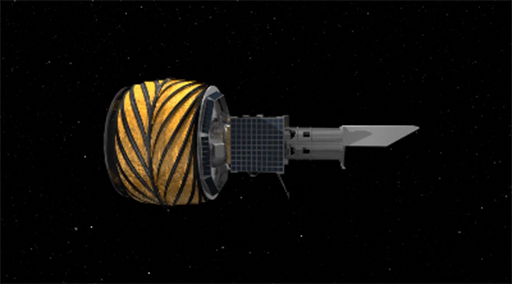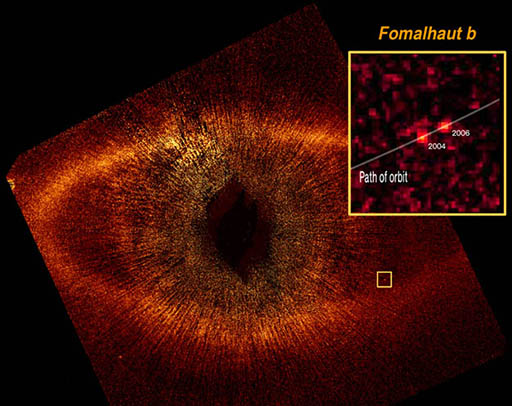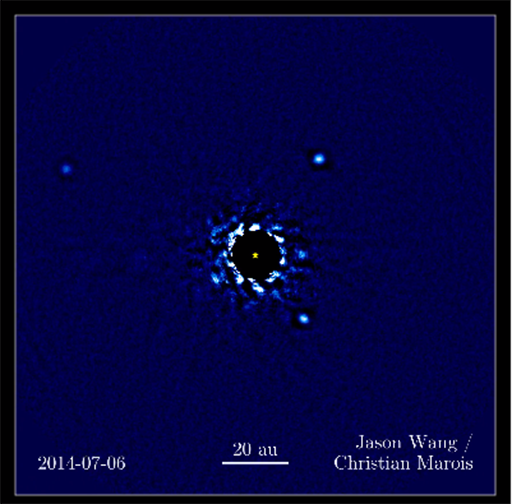5.4 Seeing exoplanets directly
All the techniques you’ve seen throughout the weeks so far rely on ingenious ways of analysing the light from just a single point source on the sky – the combined light of a star and its planets.
What hope is there of actually seeing an exoplanet directly? Remember that the bright starlight overwhelms the weak reflected light of the planet, sometimes by as much as a factor of a billion! The challenge of directly imaging an Earth twin has been likened to spotting a firefly in the glare of a searchlight when the firefly and searchlight are thousands of kilometres away. This would certainly require observing from above the Earth’s turbulent atmosphere.
Current ideas that are being developed of how to do this include blocking out the light from the star within the telescope system itself, or using a distant ‘starshade’ to create a dark shadow so that only the reflected light from the exoplanet enters the telescope. The following video shows quite beautifully how this could work.

In spite of the immense challenge, a few much larger planets in special circumstances have already been imaged directly. The first was Fomalhaut b.

Imaging Fomalhaut b was feasible for a couple of key reasons. One is that it is very far from its star allowing the starlight to be successfully blocked out. In fact, Fomalhaut b has an orbital period of 2000 years. The second reason is that it is unusually bright in the visible part of the electromagnetic spectrum. Astronomers believe this could be due to a dust shroud, or a ring system like Saturn’s but much larger and thicker, reflecting the light from the star.
Fomalhaut b probably remains the least massive directly imaged exoplanet, but there have been other remarkable observations.
One example is a system of four planets orbiting the star HR 8799. Again, the planets are very large and are far from their star, with orbital periods ranging from decades to centuries. This is a young system which means that the planets have retained heat from their formation. This allows them to be seen in infrared light, because the star is relatively less bright at these wavelengths than in visible light.
How wonderful to be able to see directly the orbit of exoplanets some 130 light years away.

